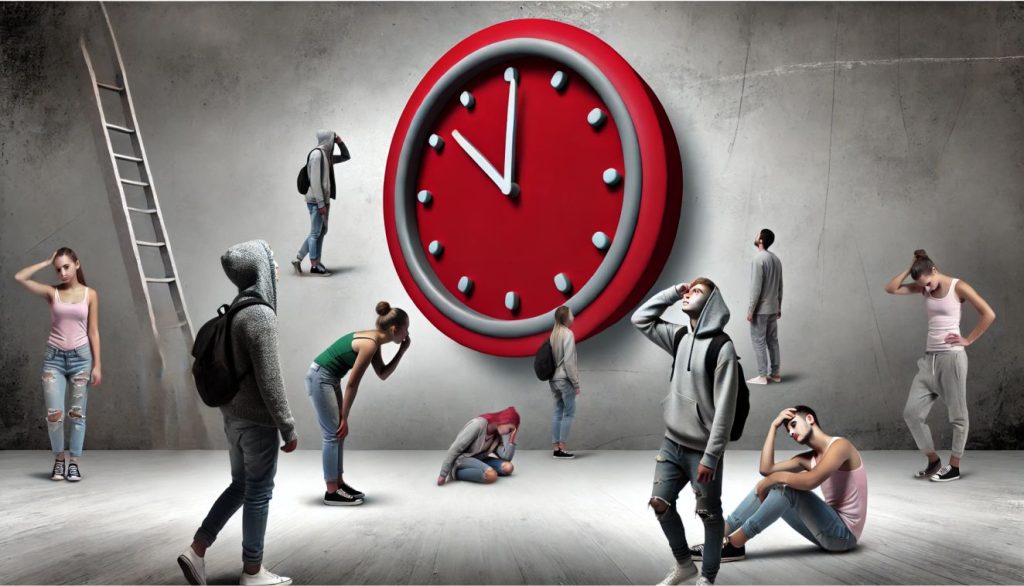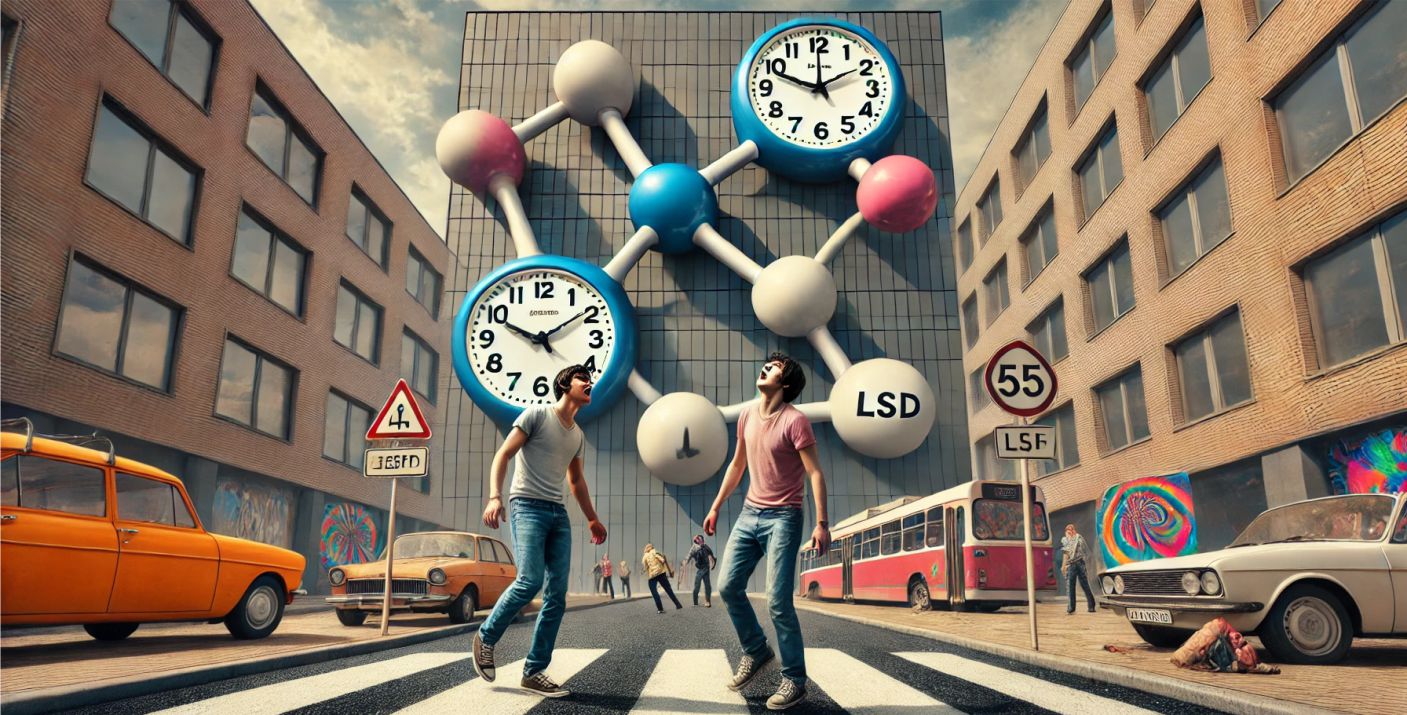Ever heard someone say they’re “dropping acid”? That slang refers to taking LSD, a powerful hallucinogenic drug that may cause intense changes in perception, mood, and thought. Formally known as lysergic acid diethylamide, LSD is a controlled substance with a long and complex history. LSD can be acid-detectable in the body for varying durations depending on the type of drug test and individual factors. Specialized tests can detect it in urine, blood, and saliva if specifically requested.
But if you’re curious about LSD, one of the biggest questions might be: how long does an acid trip really last?
How Long Does an LSD Trip Last?
Unlike a quick sugar cube fix, LSD is a marathon, not a sprint. An acid trip refers to the experience of taking LSD, which includes a wide range of effects. We’re talking about intense hallucinations that range from beautiful visual distortions to terrifying nightmares. Physical effects can include extreme changes in body temperature, sweating, and chills, which are primarily due to the drug’s interaction with the brain.
Here’s What To Know About Lysergic Acid Diethylamide (LSD) Trip
It may alter your mood in unpredictable ways, leaving you feeling euphoric one moment and anxious the next. LSD also messes with your perception of time and space, making hours feel like minutes and walls seem to melt. This distorted sense of time and space is a hallmark of the psychological effects of LSD.
That sounds wild, right? But the wild ride doesn’t end there. Here’s the thing about LSD: it could stick around in your system for quite a while, affecting your trip duration. Unlike other drugs that are quickly broken down and eliminated by your body, LSD has a special relationship with your brain cells. It binds to serotonin receptors, which play a huge role in mood, cognition, and perception. LSD’s tight grip on the receptors is why its effects linger for so long, even though the actual drug itself is eliminated from your bloodstream within a few hours.
So, How Long Does The Psychedelic Party Last?

The length of an acid trip varies greatly depending on several factors, but for now, let’s get a general idea of the timeline:
- Onset: The effects of LSD typically kick in within 30 to 90 minutes of taking it. It may come on in waves, with intensity gradually increasing. LSD can be consumed in various forms, including liquid form, which might affect the onset time.
- Peak: Here’s where things get interesting. The peak effects of an LSD trip, characterized by the most intense hallucinations and altered states of consciousness, usually occur anywhere from 1 to 4 hours after ingestion. The phase may last for several hours, though it’s not uncommon for it to taper off gradually over 4 to 6 hours. Liquid LSD is one of the forms in which the drug can be consumed, and it can be dropped directly onto the tongue or added to another substance.
- Comedown: As the peak subsides, you’ll enter the comedown phase. The intense effects start to diminish, but you might still experience some visual distortions and altered thinking for several more hours. The comedown period lasts anywhere from 6 to 12 hours.
The Trippin’ Time Machine: Factors Affecting Your Acid Trip’s Duration
We learned that unlike a quick nap, an LSD trip is a long journey. But how long that journey lasts depends on a surprising number of factors. Think of it like a recipe: the ingredients and measurements you use will affect the final product. The “ingredients” here refer to the unique aspects of you and your trip. Let’s explore the key factors that impact your acid trip’s duration:
- Dosage: Generally, higher doses of LSD lead to longer trips. Think of it like filling a bathtub – the more water you add, the longer it takes to drain. A microdose (microdosing – not mentioned) might only last a few hours, while a heavy dose could stretch into a 12-hour marathon.
- Body Chemistry: We all have unique metabolisms, which is how our bodies process substances. People who metabolize LSD faster will likely have shorter trips. Factors like age, weight, and even gender may influence metabolism.
- Set and Setting: The terms refer to your mental state (set) and the environment you’re in (setting) when you take LSD. A positive mindset and a comfortable, familiar setting contribute to a shorter, more enjoyable trip. Conversely, anxiety, fear, or an overwhelming environment may lead to a longer, more intense (and potentially negative) experience. Individuals with existing mental health problems or a family history of mental health issues may face greater mental health risks when taking LSD.
- Other Substances: Mixing LSD with other drugs, especially alcohol or stimulants, alters the trip duration and intensity. Some medications also interact with LSD, so speak to a doctor before considering LSD use. Long-term use of LSD can lead to hallucinogen-persisting perception disorder (HPPD), which causes ongoing visual distortions and flashbacks.
- LSD Potency: Street LSD varies greatly in potency. A more potent form of LSD will naturally lead to a longer trip compared to a weaker dose. Unfortunately, there’s no way to tell the potency of street LSD by simply looking at it.

Remember, all the mentioned factors often work together. For instance, a high dose taken in a stressful setting by someone with a slow metabolism could result in a very long and potentially unpleasant trip.
So, the next time you hear someone talk about “tripping,” remember – it’s not a quick on-and-off switch. It’s a journey influenced by a complex interplay of factors.
Frequently Asked Questions About Your LSD Trip
Let’s face it, there’s still a lot of mystery surrounding the powerful drug. Here, we’ll tackle some frequently asked questions (FAQs) to shed some light on the LSD experience:
4.11 What are the risks of drug abuse with LSD?
LSD is a potent hallucinogenic drug, and its use can lead to drug abuse. Professional help is often necessary for those struggling with LSD or other drug abuse. The psychological and physical side effects related to LSD withdrawal can be severe, and the dangers of drug abuse should not be underestimated. If you or someone you know is facing substance abuse problems, seeking help is crucial.
4.12 Can LSD exacerbate existing mental health problems?
Yes, LSD can exacerbate existing mental health problems such as anxiety, schizophrenia, and psychosis. While some studies suggest potential therapeutic benefits for conditions like anxiety, depression, PTSD, and substance use disorders, the risks for individuals with a history of mental health problems are significant. Treatment options are available for addressing addiction and mental health concerns related to LSD use.
4.13 What is hallucinogen persisting perception disorder (HPPD)?
Hallucinogen persisting perception disorder (HPPD) is a potential long-term effect of LSD use. HPPD can cause flashbacks and ongoing visual distortions, which may persist for years after using the drug. LSD can also trigger or worsen mental health problems, such as anxiety, schizophrenia, and psychosis. Understanding the risks of perception disorders is important for anyone considering LSD use.
Does the dosage of LSD affect how long the trip lasts?
Absolutely! Generally, higher doses lead to longer trips. Think of it like filling a glass – more liquid means a longer time to empty. A low dose might only last a few hours, while a larger dose could extend your trip for 12 hours or more.
How long does it take to start feeling the effects of LSD after taking it?
The effects of LSD typically kick in within 30 to 90 minutes. It comes on in waves, with the intensity gradually increasing.
Do other substances you take alongside LSD impact the trip duration?
Yes! Mixing LSD with other drugs, especially alcohol or stimulants, dramatically alters the trip’s duration and intensity. Some medications also interact with LSD, so youmust consult a doctor before considering LSD use.
Does a person’s body weight or metabolism influence how long an LSD trip lasts?
Yes. People who metabolize LSD faster will likely have shorter trips. Factors like age, weight, and even gender may influence metabolism.
Is there a way to predict how long an individual LSD trip will be beforehand?
Unfortunately, no. The interplay of various factors makes it difficult to predict a trip’s exact duration. However, understanding factors like dosage, body chemistry, set & setting, etc. may give you a general idea of what to expect.
What happens during the peak of an LSD trip involving serotonin receptors, and how long does it typically last?
The peak is where things get intense. The most vivid hallucinations and altered states of consciousness occur here, usually 1 to 4 hours after taking LSD. That phase lasts several hours, though it often tapers off gradually over 4 to 6 hours.
How do you know when an LSD trip is starting to wear off?
As the peak subsides, the intense effects will gradually lessen. You might still experience some visual distortions and altered thinking, but with diminishing intensity. That comedown period lasts anywhere from 6 to 12 hours.
Are there any lingering effects you might experience after an LSD trip ends?
Sometimes. Some people report feeling tired, a bit on edge, or experiencing afterglow effects – lingering feelings of happiness or a sense of lightness. The effects typically fade within 24 hours.
How long does it take for LSD to completely leave your system?
The actual drug is eliminated from your bloodstream within a few hours. However, some effects might linger due to LSD’s interaction with brain receptors. Specialized tests may detect LSD traces in urine, blood, saliva, and hair for varying durations depending on the type of test, dosage taken, individual metabolism, and sensitivity of the testing method. This makes acid detectable in the body through these specialized tests.
Is there a difference between the duration of a positive and negative LSD trip (bad trip)?
There isn’t a clear-cut difference. However, negative experiences (bad trips) feel much longer due to the intense anxiety and fear associated with them. If you’re considering LSD use, you should prioritize a safe and supportive environment to minimize the risk of a bad trip.
Remember, LSD is a powerful drug with unpredictable effects. If you’re considering using it, research thoroughly, understand the risks, and never use it alone. If you or someone you know is struggling with substance use disorders, including LSD, seek professional help.



